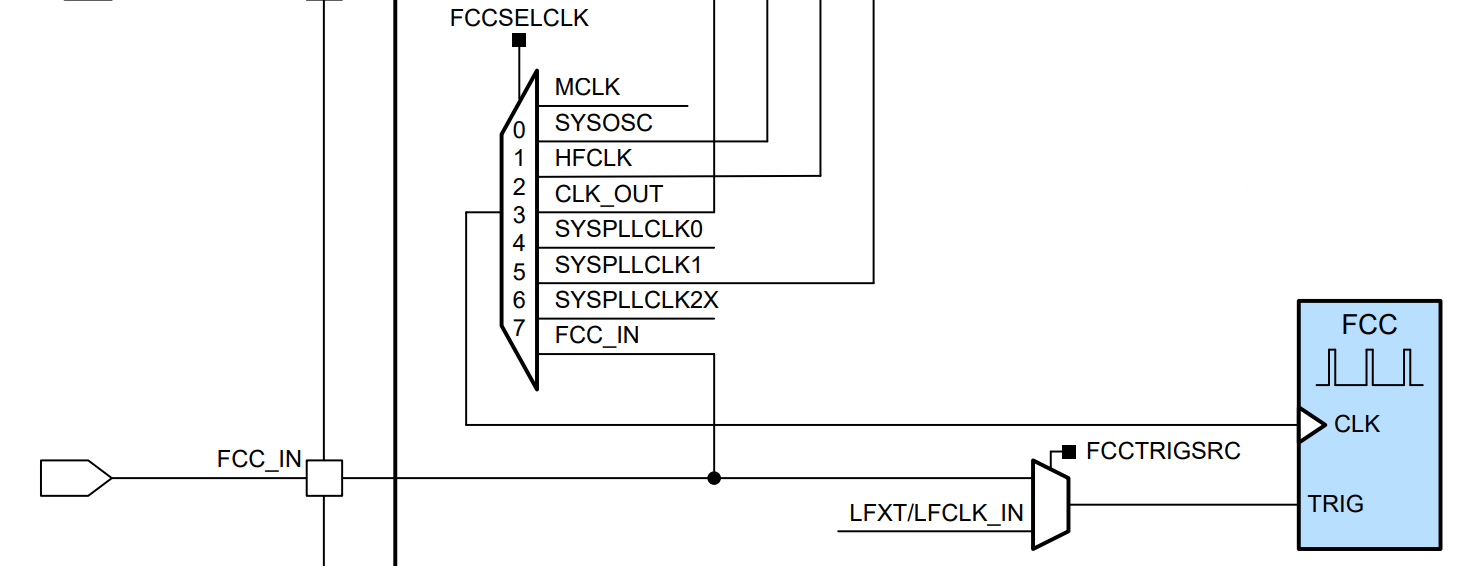SLAAE76B march 2023 – june 2023 MSPM0G1105 , MSPM0G1106 , MSPM0G1107 , MSPM0G1505 , MSPM0G1506 , MSPM0G1507 , MSPM0G3105 , MSPM0G3106 , MSPM0G3107 , MSPM0G3505 , MSPM0G3506 , MSPM0G3507
4.4 Frequency Clock Counter (FCC)
The frequency clock counter (FCC) enables flexible in-system testing and calibration of a variety of oscillators and clocks on the device. The FCC counts the number of clock periods seen on the selected source clock within a known fixed trigger period (derived from a secondary reference source) to provide an estimation of the frequency of the source clock.
 Figure 4-7 MSPM0G Frequency Clock Counter
Block Diagram
Figure 4-7 MSPM0G Frequency Clock Counter
Block DiagramApplication software can use the FCC to measure the frequency of the following oscillators and clocks:
- MCLK
- SYSOSC
- HFCLK
- CLK_OUT
- SYSPLLCLK0
- SYSPLLCLK1
- SYSPLLCLK2X
- The external FCC input (FCC_IN)